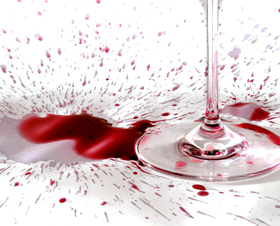Wine Evaluation; The Nose Knows No’s Not An Option.
Chapter Three, Part Six.
 In certain wine circles people share the opinion that the difference between an aroma and a bouquet has to do with the age of the wine. They believe that young wines display aroma, and only when wine reaches maturity will it develop a bouquet. While studying for my Sommelier certificate, I was taught that aroma comes from the grape variety and bouquet stems from the vinification process. I, of course, don’t subscribe to either school of thought.
In certain wine circles people share the opinion that the difference between an aroma and a bouquet has to do with the age of the wine. They believe that young wines display aroma, and only when wine reaches maturity will it develop a bouquet. While studying for my Sommelier certificate, I was taught that aroma comes from the grape variety and bouquet stems from the vinification process. I, of course, don’t subscribe to either school of thought.
In my convoluted cranium it seems more logical that an aroma is a single fragrance and bouquet is a collection of fragrances. After all, a single flower doesn’t make a bouquet; it takes several to earn that distinction. But if I were you I’d take everything I write with a grain of salt. Remember my convoluted cranium also makes up words to suit my needs.
Whatever you call them, the scents emanating from a glass of wine are collectively referred to as the nose. How aromatic a wine’s nose is at any given moment is influenced by many factors. For example, wine that is too cold will display less fragrance than wine at room temperature. Wine that has been exposed to air will generally be more fragrant than a bottle that has just been opened. You “let it breathe” because some wines remain closed even though you have just opened the bottle. That simply means the aromas need time and oxygen to open up and reveal themselves.
Young wines that seem closed are also referred to as tight. I suppose wine is a lot like people in that respect. I was once young and tight, but like a Chardonnay that’s spent too many years in the cellar I’m now old and flabby.
The interaction between wine and oxygen speeds the release of pent-up fragrances much like the interaction of wine and blood speeds the release of pent-up idiocy. To introduce air into wine before you sniff it, you simply swirl  the wine around in your glass. The more vigorously you swirl, the more oxygen you will mix into the wine, and the higher the probability that you will spoil your host’s tablecloth. Practice this at home before leaping into public swirlification.
the wine around in your glass. The more vigorously you swirl, the more oxygen you will mix into the wine, and the higher the probability that you will spoil your host’s tablecloth. Practice this at home before leaping into public swirlification.
There’s always a possibility that the wine you are about to analyze is spoiled in some way and could emit ‘off’ odors. Bacterial spoilage, cork taint, or nasty organisms can find their way into wine and negatively affect it after bottling. One such organism is the yeast Brettanomyces, or Brett, which is found on some grapes. Brett can impart ‘animal’ and ‘sweaty saddle’ aromas in wine. Before drinking wine we search for flaws in the nose because sometimes Brett happens.
If you inhale unpleasant aromas they may shock your smell buds (I warned you that I make up words), and the pungent aromas can adversely affect your sense of taste for some time. I once inhaled a particularly repugnant odor in an off bottle. It so negatively impacted my sense of good taste that before I came to my senses I took my wife to Popeye’s Chicken and Biscuits on our wedding anniversary.
To avoid this calamity and keep peace at home, approach a glass of wine warily at first. Pass your nose a few inches above the rim of the glass and cautiously inhale the aromas. When you think it’s safe to dive in deeper, swirl your glass to aerate the wine and stick your nose well into the glass and take a long, deep sniff.
Many wine sniffers prefer to inhale wine in a series of short intense bursts, but I prefer slowly breathing in the aromas until my breath gives out. Those last few seconds of draw is when I often catch a glimpse of an elusive aroma. At this point you might ask, “can you really ‘catch a glimpse’ of an aroma?” at which point I will ask you to leave the room. Remember your nose can detect thousands of aromas so recognizing a familiar scent should be easy. In other words, when it comes to describing the nose, the nose knows no’s not an option.






















